Investigation on Planetary Bearing Weak Fault Diagnosis Based on a Fault Model and Improved Wavelet Ridge
Abstract
:1. Introduction
2. Fault Model
2.1. Meshing Frequency and Fault Characteristic Frequency
2.2. Fault Simulation Model
2.1.1. Amplitude Modulation Model
2.2.2. Meshing Force Model
2.2.3. Fault Step-Impact Model
2.2.4. Bearing Load Zone Pass Effect
2.2.5. Outer Ring Fault Vibration Signal Model
3. Theory of Proposed Method
3.1. Improved Wavelet Scalogram
3.2. Wavelet Ridge
3.3. Incipient Feature Extraction Method
4. Algorithm Verification
4.1. Simulation Analysis
4.2. Experimental Study
5. Conclusions
Author Contributions
Acknowledgments
Conflicts of Interest
References
- Lihovd, E.; Johannssen, T.I.; Steinebach, C.; Rasmussen, M. Intelligent diagnosis and maintenance management. J. Intell. Manuf. 1998, 9, 523–537. [Google Scholar] [CrossRef]
- Lei, Y.G.; Lin, J.; Zuo, M.J.; He, Z. Condition monitoring and fault diagnosis of planetary gearboxes: A review. Measurement 2013, 48, 292–305. [Google Scholar] [CrossRef]
- Mcfadden, P.D.; Smith, J.D. An Explanation for the Asymmetry of the Modulation Sidebands about the Tooth Meshing Frequency in Epicyclic Gear Vibration. Proc. Inst. Mech. Eng. Part C 1985, 199, 65–70. [Google Scholar] [CrossRef]
- Mosher, M. Understanding Vibration Spectra of Planetary Gear Systems for Fault Detection. In Proceedings of the ASME 2003 International Design Engineering Technical Conferences and Computers and Information in Engineering Conference, Chicago, IL, USA, 2–6 September 2003; pp. 645–652. [Google Scholar]
- Inalpolat, M.; Kahraman, A. A theoretical and experimental investigation of modulation sidebands of planetary gear sets. J. Sound Vib. 2009, 323, 677–696. [Google Scholar] [CrossRef]
- Inalpolat, M.; Kahraman, A. A dynamic model to predict modulation sidebands of a planetary gear set having manufacturing errors. J. Sound Vib. 2010, 329, 371–393. [Google Scholar] [CrossRef]
- Feng, Z.; Zuo, M.J. Vibration signal models for fault diagnosis of planetary gearboxes. J. Sound Vib. 2012, 331, 4919–4939. [Google Scholar] [CrossRef]
- Liang, X.; Zuo, M.J.; Hoseini, M.R. Vibration signal modeling of a planetary gear set for tooth crack detection. Eng. Fail. Anal. 2015, 48, 185–200. [Google Scholar] [CrossRef]
- Lei, Y.G.; Tang, W.; Kong, D.T. Vibration Signal Simulation and Fault Diagnosis of Planetary Gearboxes Based on Transmission Mechanism Analysis. J. Mech. Eng. 2014, 50, 61–68. [Google Scholar] [CrossRef]
- Huang, Y.H.; Ding, K.; He, G.L. Mathematical Model of Planetary Gear Sets’ Vibration Signal and Characteristic Frequency Analysis. J. Mech. Eng. 2016, 52, 46–53. [Google Scholar] [CrossRef]
- Antoni, J. The spectral kurtosis: A useful tool for characterising non-stationary signals. Mech. Syst. Signal Process. 2006, 20, 282–307. [Google Scholar] [CrossRef]
- Antoni, J. Fast computation of the kurtogram for the detection of transient faults. Mech. Syst. Signal Process. 2007, 21, 108–124. [Google Scholar] [CrossRef]
- Lei, Y.G.; Lin, J.; He, Z.J.; Zi, Y.Y. Application of an improved kurtogram method for fault diagnosis of rolling element bearings. Mech. Syst. Signal Process. 2011, 25, 1738–1749. [Google Scholar] [CrossRef]
- Wang, Y.X.; Liang, M. An adaptive SK technique and its application for fault detection of rolling element bearings. Mech. Syst. Signal Process. 2011, 25, 1750–1764. [Google Scholar] [CrossRef]
- Chen, X.; Feng, F.; Zhang, B. Weak Fault Feature Extraction of Rolling Bearings Based on an Improved Kurtogram. Sensors 2016, 16, 1482. [Google Scholar] [CrossRef] [PubMed]
- Antoni, J.; Daniere, J.; Guillet, F. Effective vibration analysis of IC engines using cyclostationarity. Part I—A methodology for condition monitoring. J. Sound Vib. 2002, 257, 815–837. [Google Scholar] [CrossRef]
- Antoni, J.; Daniere, J.; Guillet, F.; Randall, R.B. Effective vibration analysis of IC engines using cyclostationarity. Part II—New results on the reconstruction of the cylinder pressures. J. Sound Vib. 2002, 257, 839–856. [Google Scholar] [CrossRef]
- Do, V.T.; Le, C.N. Adaptive Empirical Mode Decomposition for Bearing Fault Detectionp. J. Mech. Eng. 2016, 62, 281–290. [Google Scholar] [CrossRef]
- McFadden, P.D.; Toozhy, M.M. Application of synchronous averaging to vibration monitoring of rolling element bearings. Mech. Syst. Signal Process. 2000, 14, 891–906. [Google Scholar] [CrossRef]
- Zhu, L.M.; Ding, H.; Zhu, X.Y. Synchronous averaging of time-frequency distribution with application to machine condition monitoring. J. Vib. Acoust. 2007, 129, 441–447. [Google Scholar] [CrossRef]
- Zhang, H.; Chen, X.; Du, Z.; Yan, R. Kurtosis based weighted sparse model with convex optimization technique for bearing fault diagnosis. Mech. Syst. Signal Process. 2016, 80, 349–376. [Google Scholar] [CrossRef]
- Ding, X.; He, Q. Time-frequency manifold sparse reconstruction: A novel method for bearing fault feature extraction. Mech. Syst. Signal Process. 2016, 80, 392–413. [Google Scholar] [CrossRef]
- Qian, Y.; Yan, R.; Hu, S. Bearing Degradation Evaluation Using Recurrence Quantification Analysis and Kalman Filter. IEEE Trans. Instrum. Meas. 2014, 63, 2599–2610. [Google Scholar] [CrossRef]
- Liu, J.; Wang, W.; Golnaraghi, F. An Extended Wavelet Spectrum for Bearing Fault Diagnostics. IEEE Trans. Instrum. Meas. 2008, 57, 2801–2812. [Google Scholar]
- Qin, Y.; Mao, Y.F.; Tang, B.P. Vibration signal component separation by iteratively using basis pursuit and its application in mechanical fault detection. J. Sound Vib. 2013, 332, 5217–5235. [Google Scholar] [CrossRef]
- Huang, N.E.; Shen, Z.; Long, S.R. The empirical mode decomposition and the Hilbert spectrum for nonlinear and non-stationary time series analysis. Proc. R. Soc. Lond. A 1998, 254, 903–995. [Google Scholar] [CrossRef]
- Soualhi, A.; Medjaher, K.; Zerhouni, N. Bearing Health Monitoring Based on Hilbert-Huang Transform, Support Vector Machine, and Regression. IEEE Trans. Instrum. Meas. 2015, 64, 52–62. [Google Scholar] [CrossRef]
- He, Q.B.; Wang, X.X. Time-frequency manifold correlation matching for periodic fault identification in rotating machines. J. Sound Vib. 2013, 332, 2611–2626. [Google Scholar] [CrossRef]
- Halim, E.B.; Choudhury, M.A.A.S.; Shah, S.L.; Zuo, M.J. Time domain averaging across all scales: A novel method for detection of gearbox faults. Mech. Syst. Signal Process. 2008, 22, 261–278. [Google Scholar] [CrossRef]
- Peng, Z.K.; Chu, F.L.; Tse, P.W. Detection of the rubbing-caused impacts for rotor-stator fault diagnosis using reassigned scalogram. Mech. Syst. Signal Process. 2005, 19, 391–409. [Google Scholar] [CrossRef]
- Sawalhi, N.; Randall, R.B. Vibration response of spalled rolling element bearings: Observations, simulations and signal processing techniques to track the spall size. Mech. Syst. Signal Process. 2011, 25, 846–870. [Google Scholar] [CrossRef]
- Peng, Z.K.; Chu, F.L. Application of the wavelet transform in machine condition monitoring and fault diagnostics: A review with bibliography. Mech. Syst. Signal Process. 2004, 18, 199–221. [Google Scholar] [CrossRef]
- Yan, R.; Gao, R.X. Impact of wavelet basis on vibration analysis for rolling bearing defect diagnosis. In Proceedings of the 2011 IEEE International Instrumentation and Measurement Technology Conference, Beijing, China, 10–12 May 2011; pp. 1–4. [Google Scholar]
- Siegel, D.; Al-Atat, H.; Shauche, V.; Liao, L.X.; Snyder, J.; Lee, J. Novel method for rolling element bearing health assessment—A tachometer-less synchronously averaged envelope feature extraction technique. Mech. Syst. Signal Process. 2012, 29, 362–376. [Google Scholar] [CrossRef]
- Qin, Y.; Tang, B.; Mao, Y. Adaptive signal decomposition based on wavelet ridge and its application. Signal Process. 2015, 120, 480–494. [Google Scholar] [CrossRef]
- Mallat, S. A Wavelet Tour of Signal Processing; China Machine Press: Beijing, China, 2003; pp. 67–81. [Google Scholar]
- Liu, H.; Cartwright, A.N.; Basaran, C. Moire interferogram phase extraction: A ridge detection algorithm for continuous wavelet transforms. Appl. Opt. 2004, 43, 850–857. [Google Scholar] [CrossRef] [PubMed]

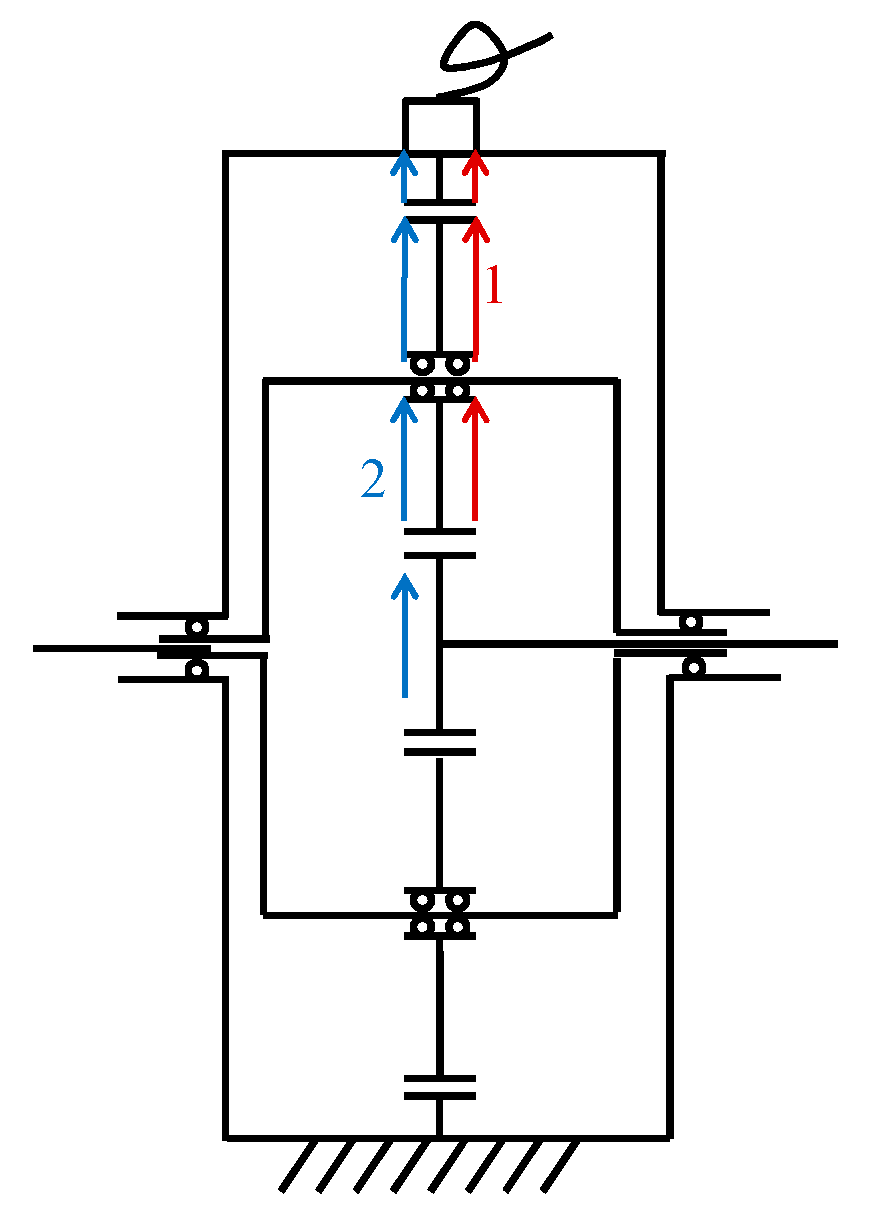

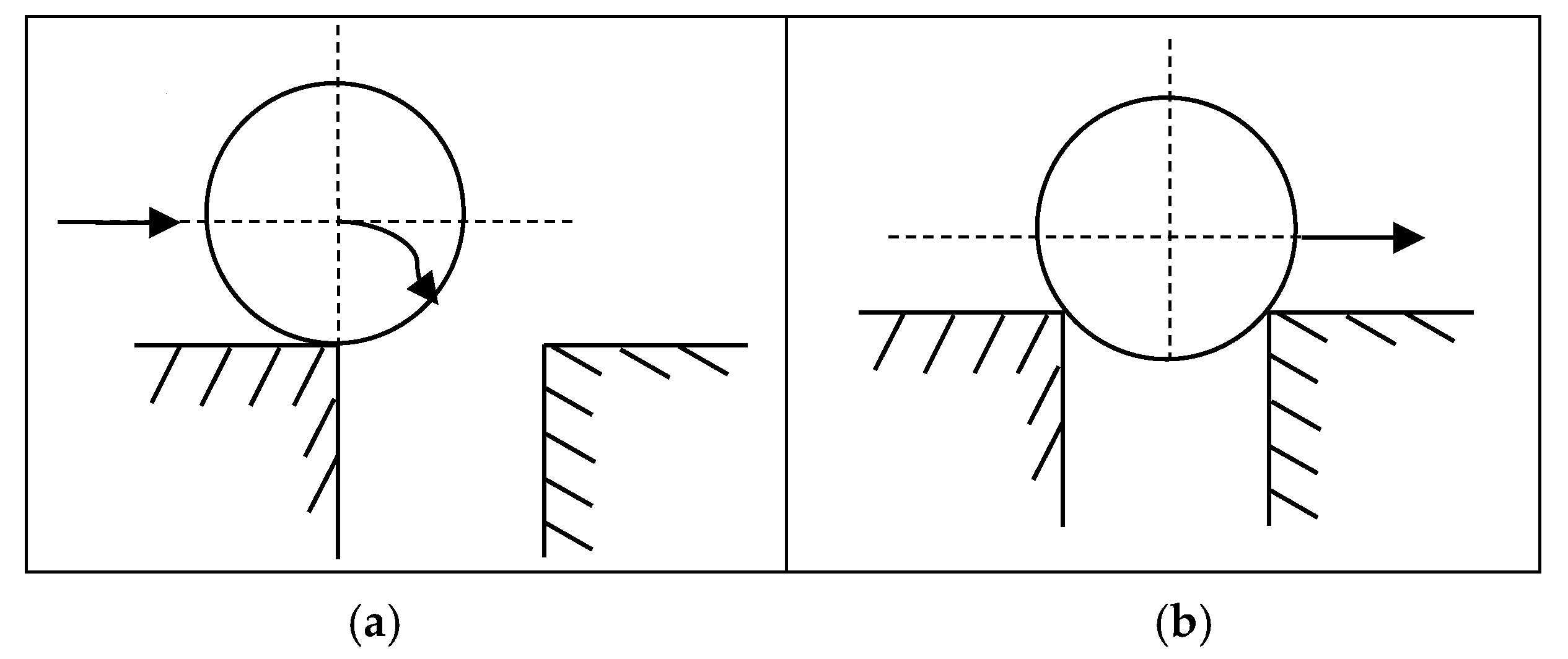
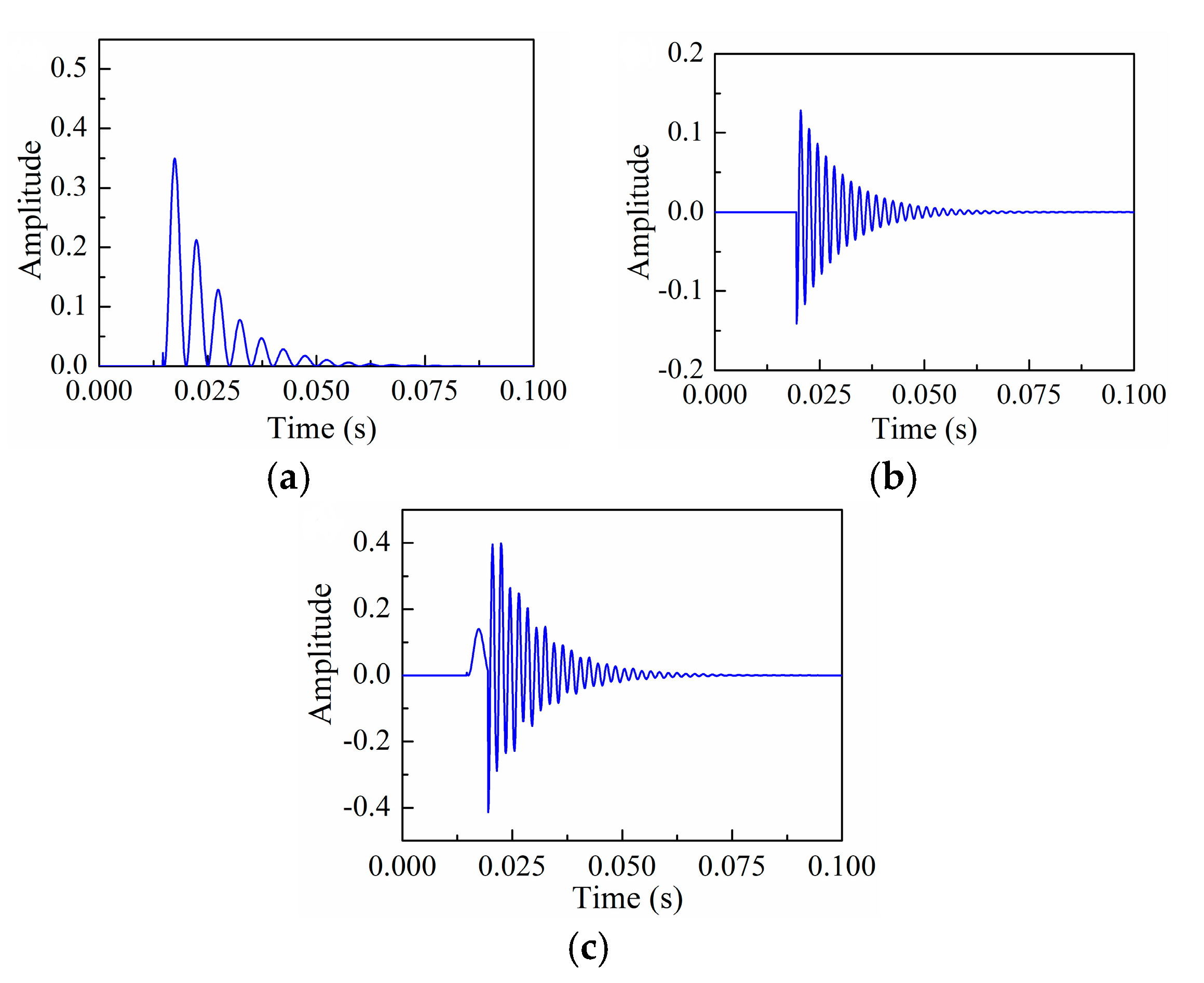
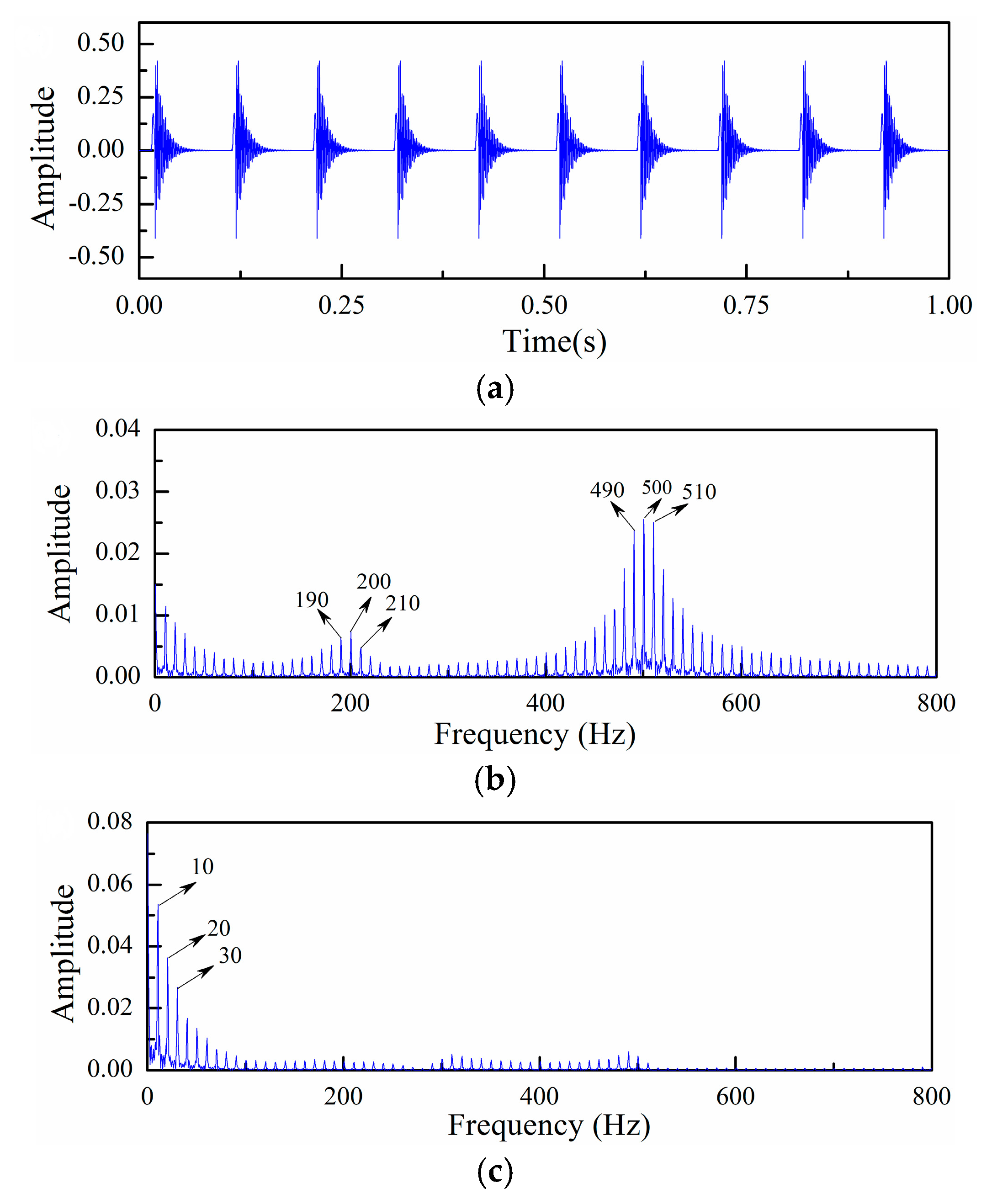



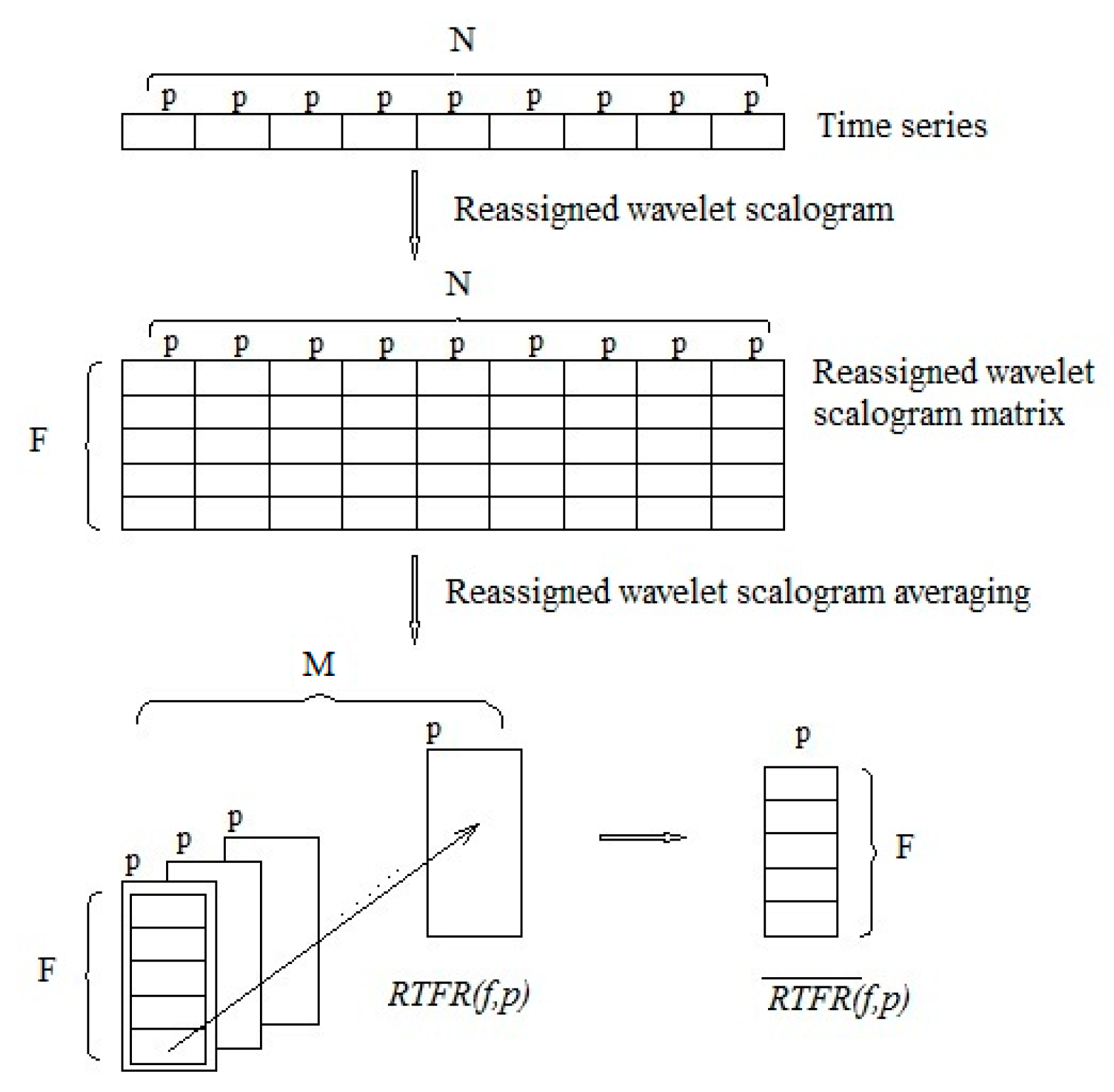

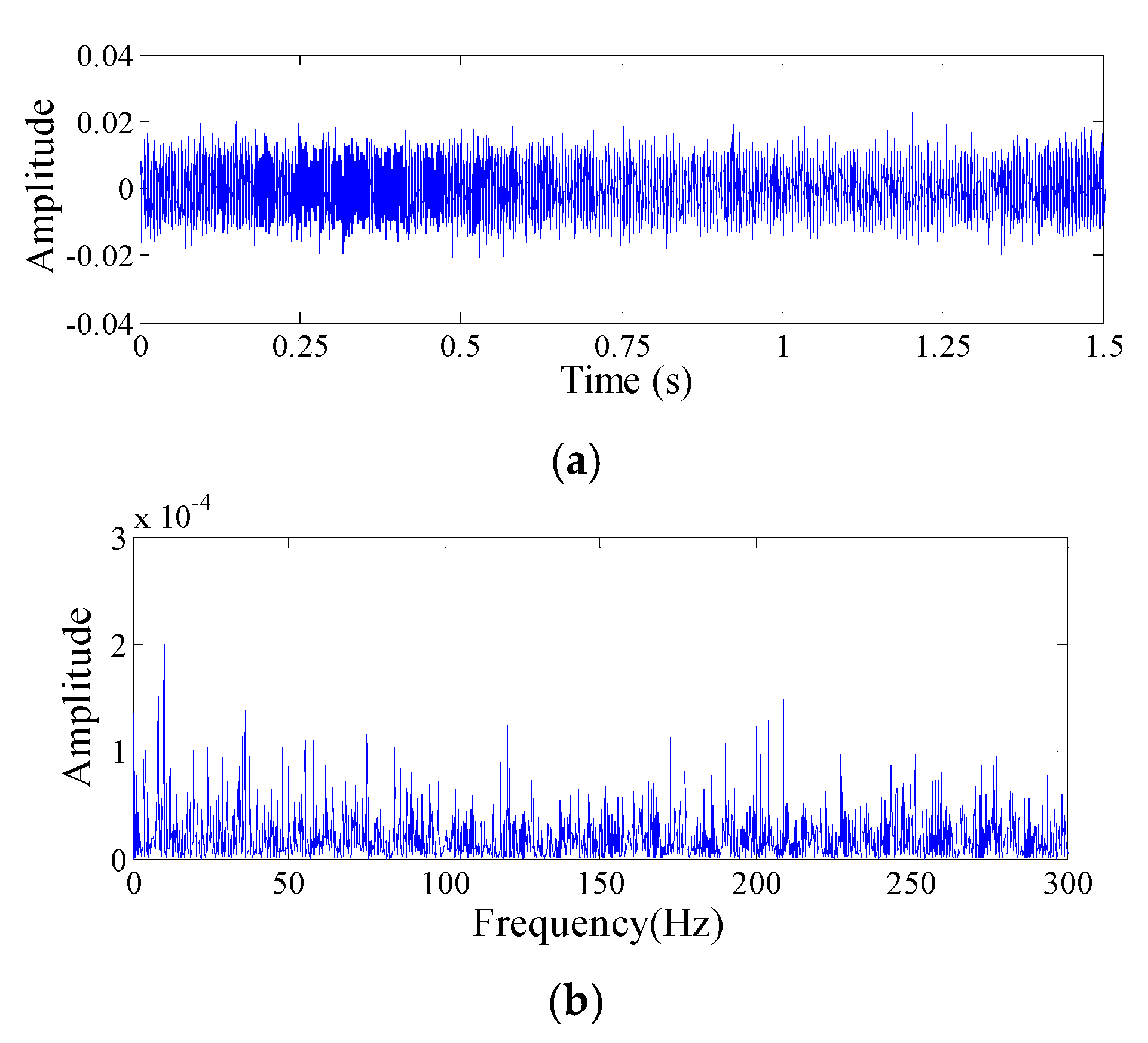
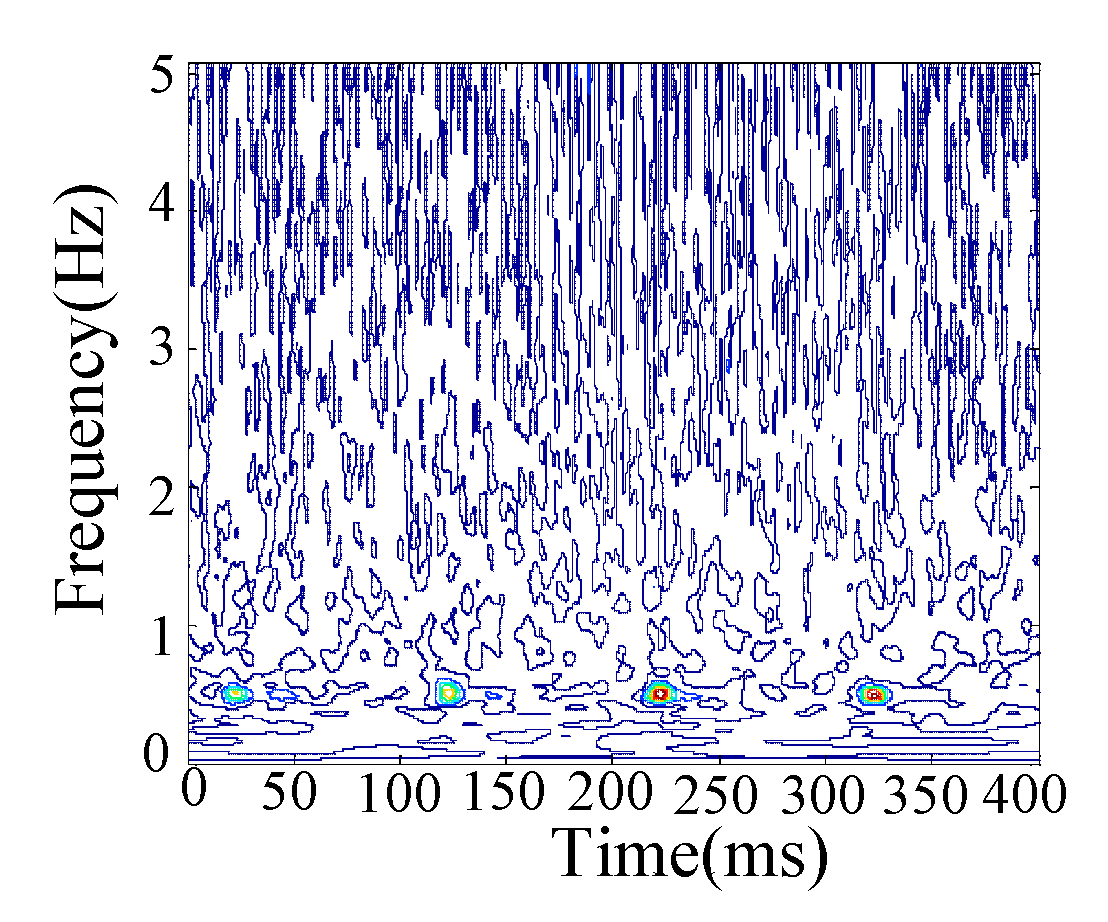
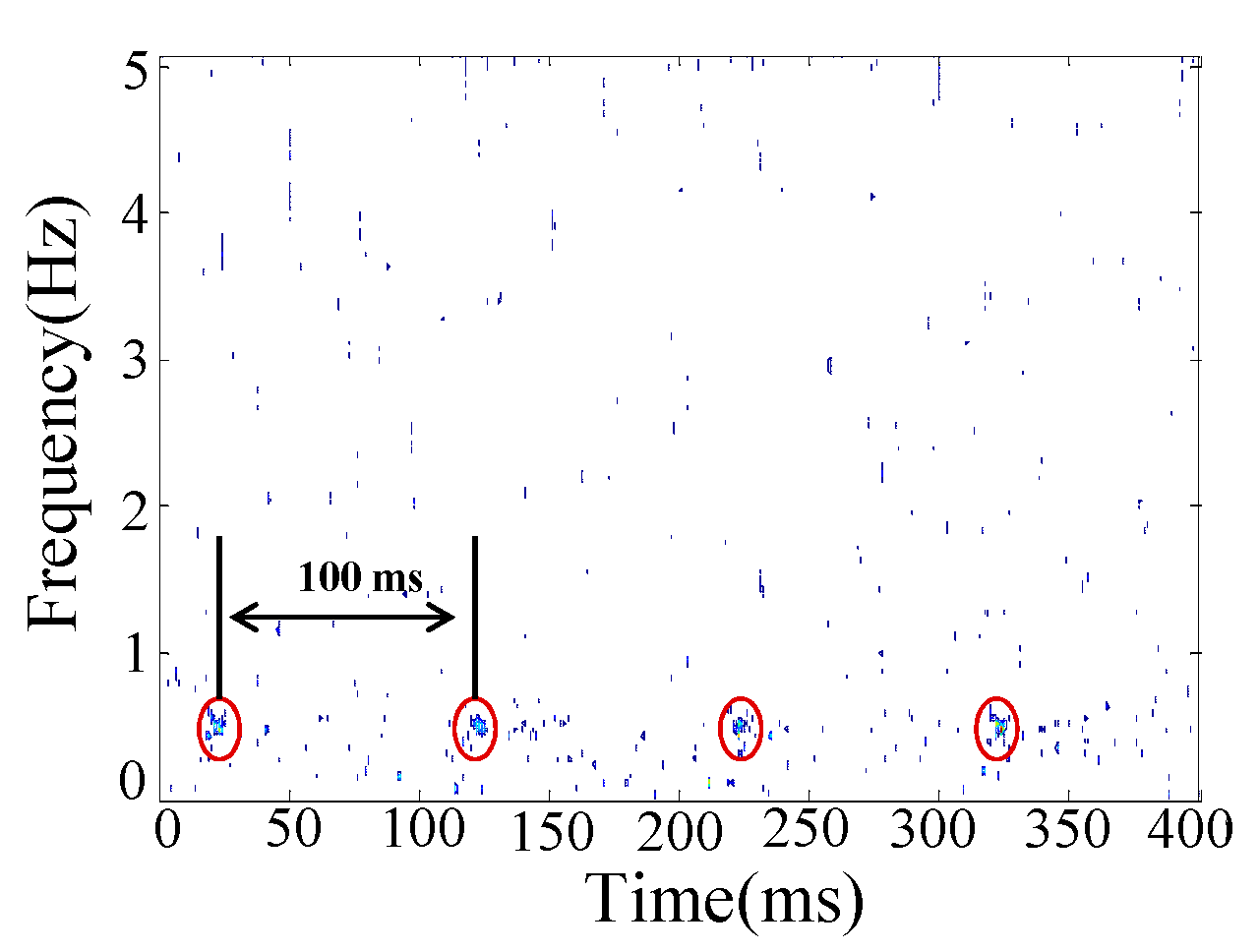
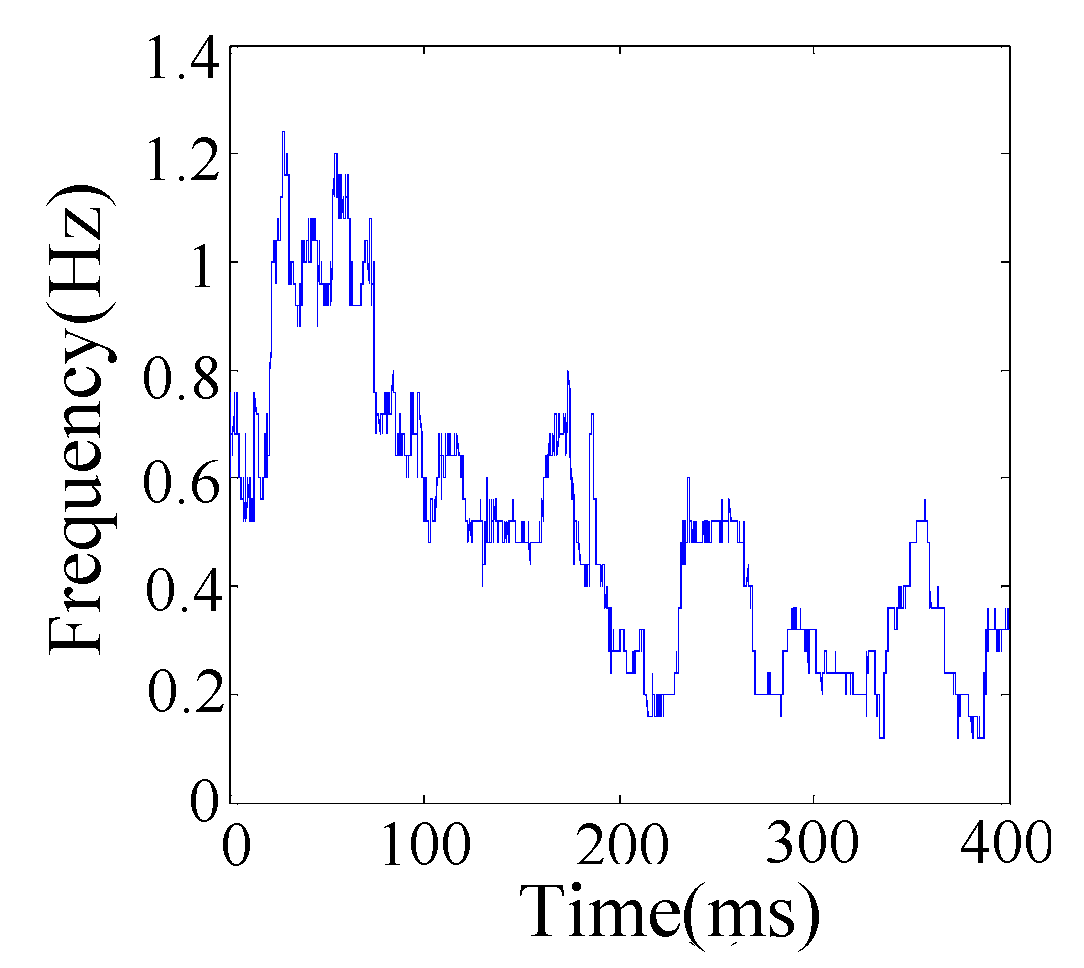
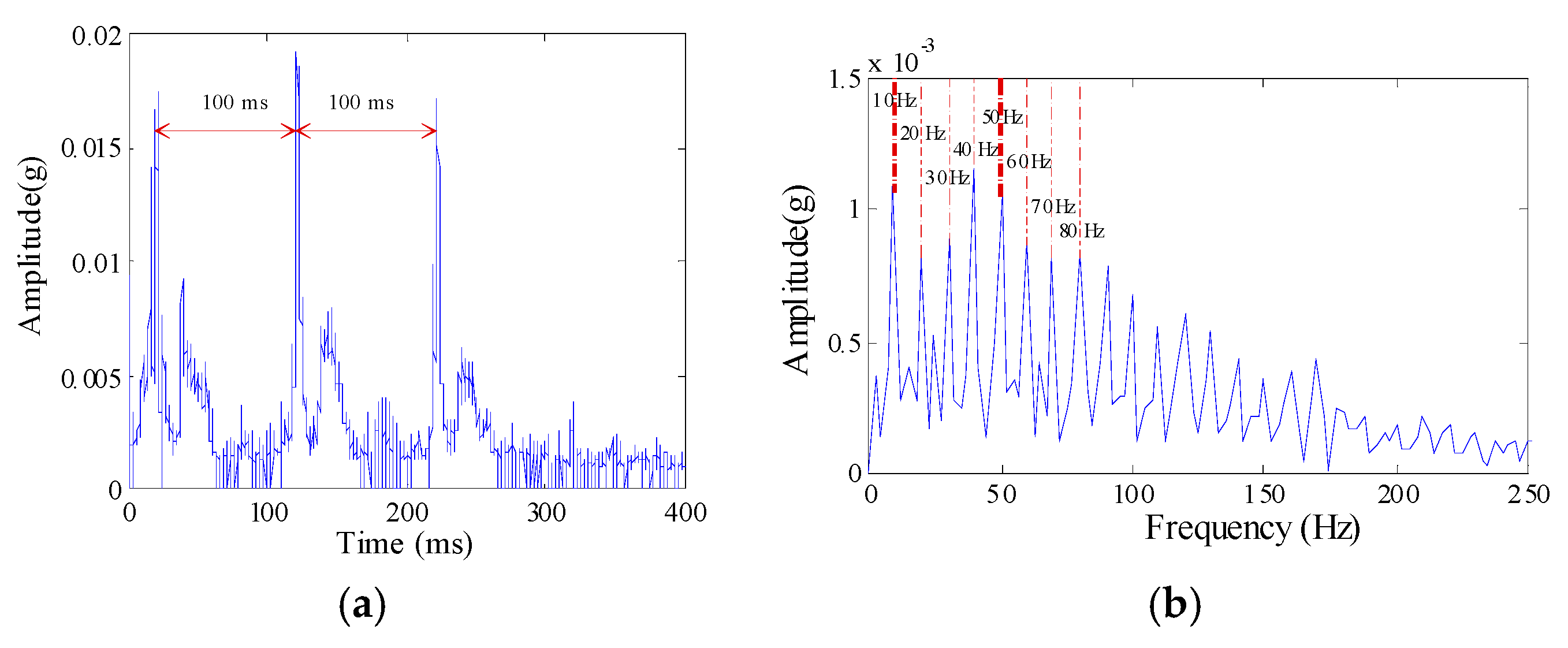


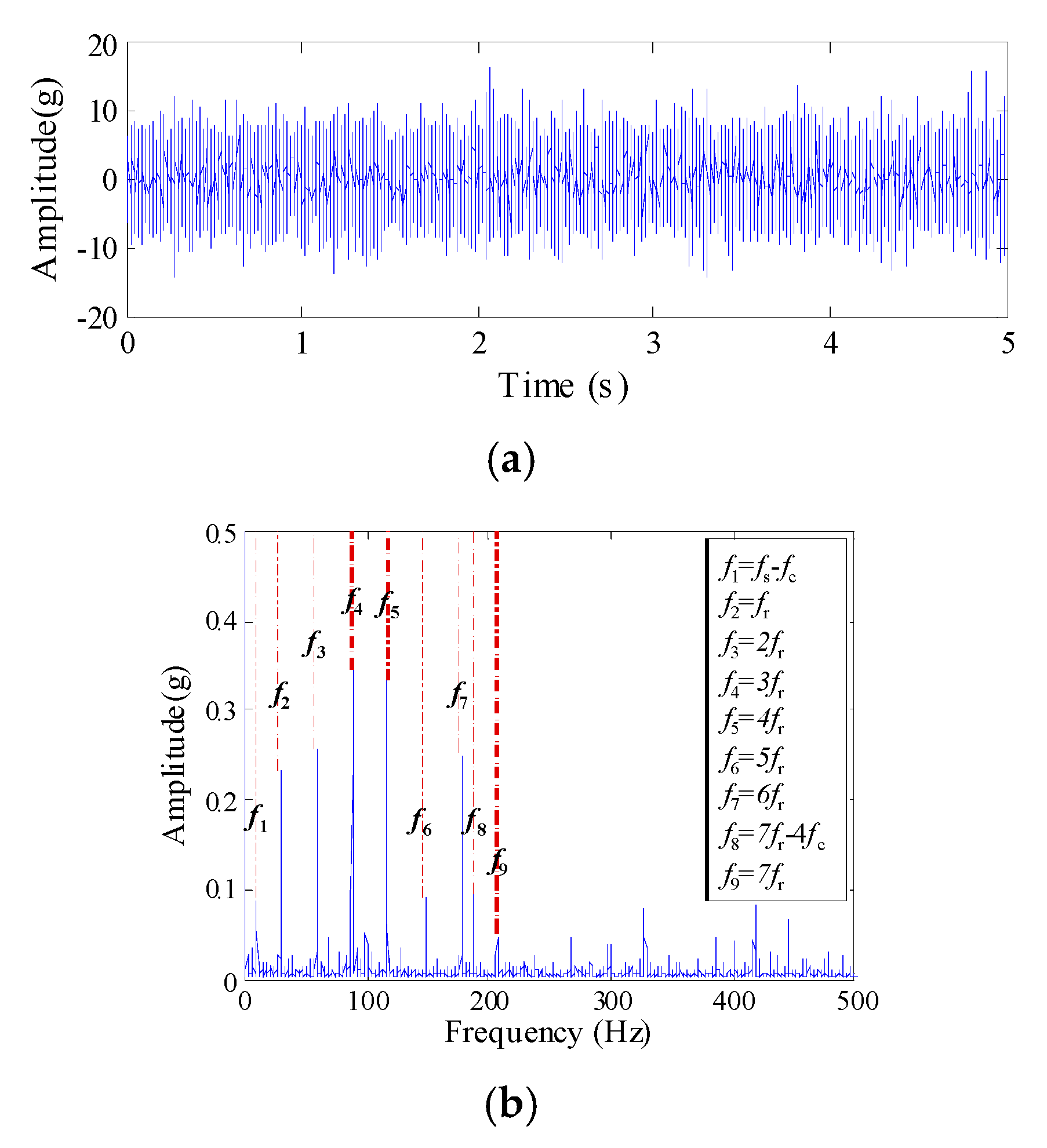

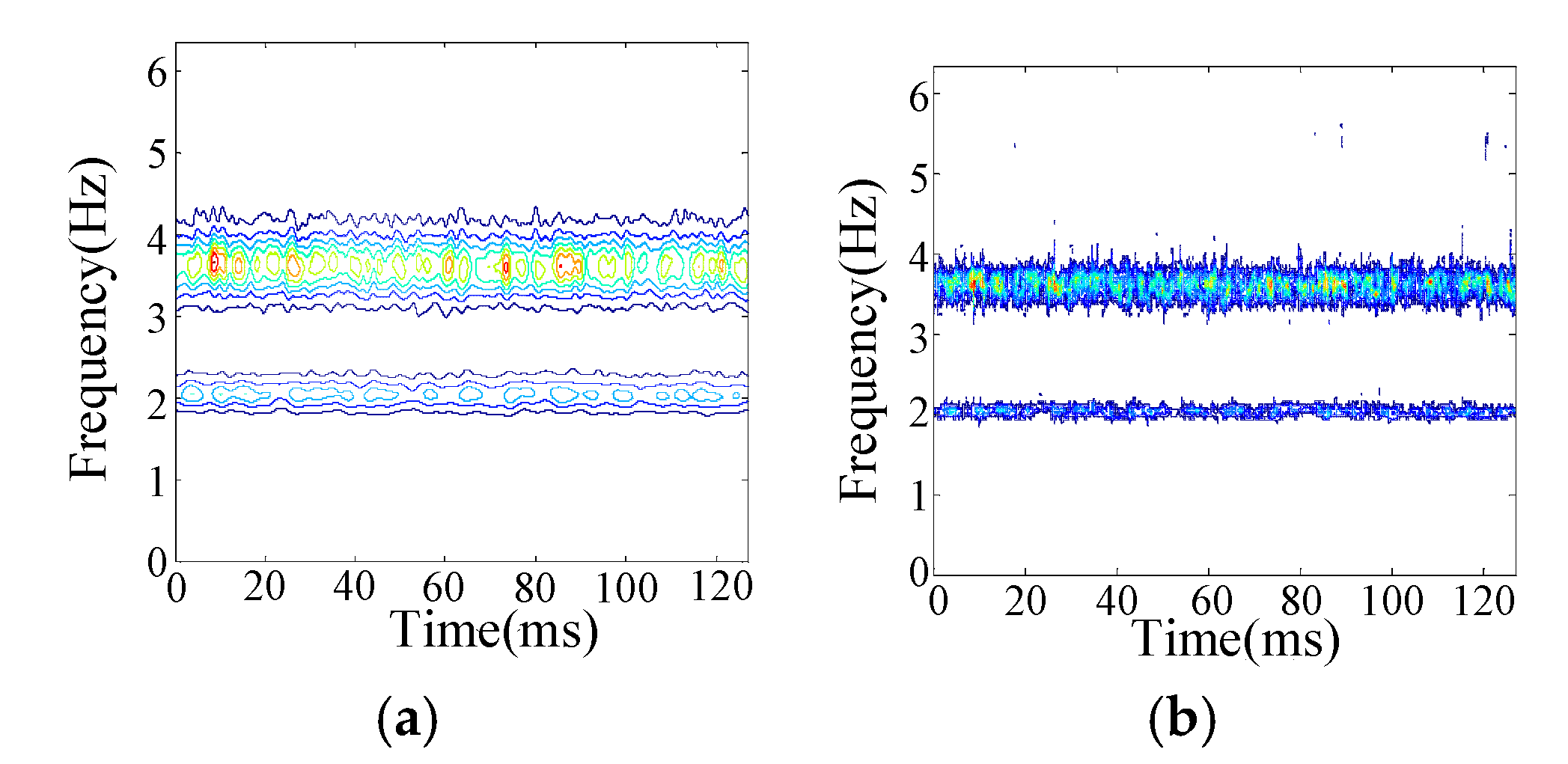
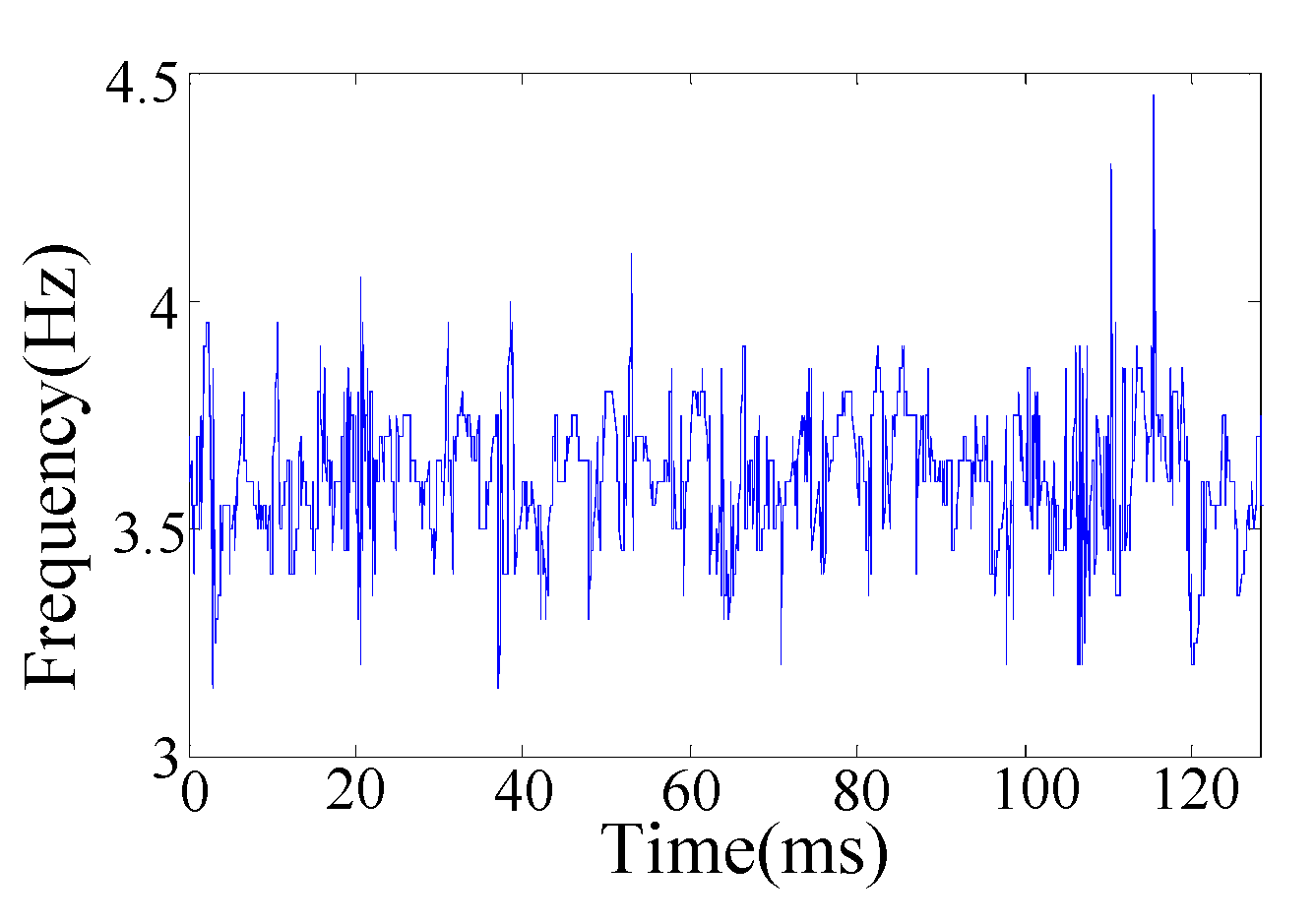
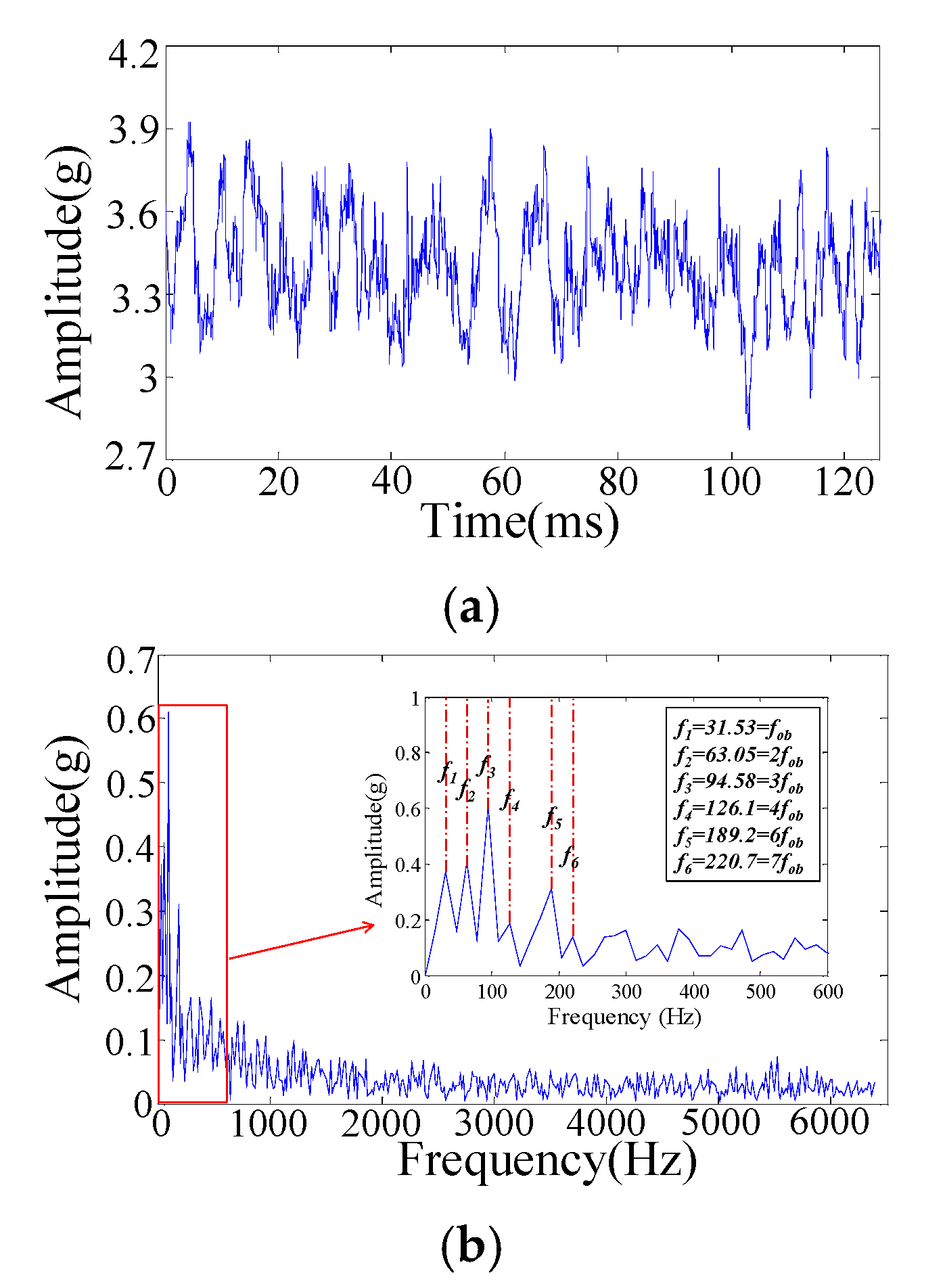
| Configuration Parameter | Parameter Values |
|---|---|
| The number of sun gear tooth | 17 |
| The number of planet gear tooth | 35 |
| The number of annular gear tooth | 88 |
| The number of planet gear | 3 |
| Transmission ratio | 6.176 |
| Type of planetary bearing | 204 NJ |
| The number of planetary bearing roller | 11 |
| The bearing pitch diameter | 34 mm |
| The planetary rolling element diameter | 7.493 mm |
| The planetary bearing contact angle | 0° |
| Characteristic Frequency | Frequency Values |
|---|---|
| Sampling Frequency | 12,800 Hz |
| The rotation speed | 1800 rpm |
| The rotation frequency of sun gear | 30 Hz |
| The rotation frequency of planet carrier | 4.86 Hz |
| The relative rotation frequency of planet gear | 12.21 Hz |
| The absolute rotation frequency of planet gear | 7.36 Hz |
| Bearing outer ring fault characteristic frequency | 31.53 Hz |
| Bearing inner ring fault characteristic frequency | 49.38 Hz |
© 2018 by the authors. Licensee MDPI, Basel, Switzerland. This article is an open access article distributed under the terms and conditions of the Creative Commons Attribution (CC BY) license (http://creativecommons.org/licenses/by/4.0/).
Share and Cite
Li, H.; Yang, R.; Wang, C.; He, C. Investigation on Planetary Bearing Weak Fault Diagnosis Based on a Fault Model and Improved Wavelet Ridge. Energies 2018, 11, 1286. https://doi.org/10.3390/en11051286
Li H, Yang R, Wang C, He C. Investigation on Planetary Bearing Weak Fault Diagnosis Based on a Fault Model and Improved Wavelet Ridge. Energies. 2018; 11(5):1286. https://doi.org/10.3390/en11051286
Chicago/Turabian StyleLi, Hongkun, Rui Yang, Chaoge Wang, and Changbo He. 2018. "Investigation on Planetary Bearing Weak Fault Diagnosis Based on a Fault Model and Improved Wavelet Ridge" Energies 11, no. 5: 1286. https://doi.org/10.3390/en11051286





